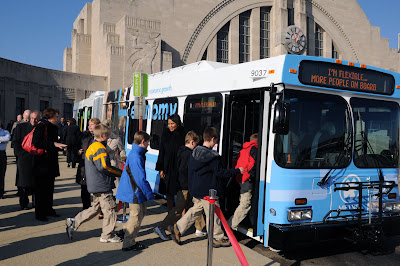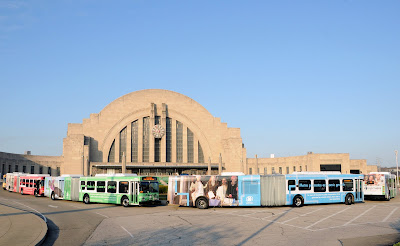
As Cincinnati painstakingly works its way towards a more comprehensive transit network we must not forget that American cities are largely built around the automobile and sometimes having access to an automobile makes life easier. This does not mean that you must own and maintain a personal automobile though.
The option for those looking to live car-free or at least car-light is urban car sharing which has taken off in several American cities. In a nutshell urban car sharing compliments lifestyles that use public transit, walking and/or cycling as a primary means of transportation. In these cases the car sharing then acts as an option for trips otherwise not possible through the aforementioned means of transportation.
Out-of-town trips, special occasions (i.e. moving, joy ride, date), or trips to locations accessible only by automobiles are then made easily accessible for those not interesting in owning and maintaining a costly automobile. Users of car sharing programs like Zipcars have been found to reduce the number of automobiles per household and increase their usage of transit, bicycling and walking.
Programs such as these are often popular in high density urban locations well-served by public transit or near places with low car ownership rates like college campuses. In Midtown Atlanta alone there are 21 Zipcar locations that serve the high density urban community which is also home to the Georgia Institute of Technology and its 20,000 students. Comparatively, Uptown Cincinnati has zero Zipcar locations to serve its high density urban community and the University of Cincinnati’s roughly 40,000 students.
If you look further to downtown Atlanta you can add in another seven Zipcar locations with two more in the Inman Park/Little Five Points area just a stones throw away. In downtown Cincinnati and historic Over-the-Rhine the trend continues with zero Zipcar locations serving a higher density urban community than its Atlanta counterpart.
In the rest of Atlanta another 14 Zipcar locations can be found bringing the total to 44 Zipcar locations in Metro Atlanta with one to two cars per location while Cincinnati has none. Meanwhile in Cincinnati car-free individuals struggle to make things work in a limited-bus and car only city with many more looking to have the option of living car-free or car-light.
The number of American cities that boast public transit systems comprehensive enough to allow for mainstream car-free lifestyles can be counted on one hand. As a result car sharing programs like Zipcars play an instrumental role in the process of creating a lesser demand for personal automobiles. And it seems to me like Cincinnati is a perfect urban region for such a program, and regional leaders in Cincinnati should examine establishing a local carsharing program as has been done in cities like Philadelphia and Cleveland.

